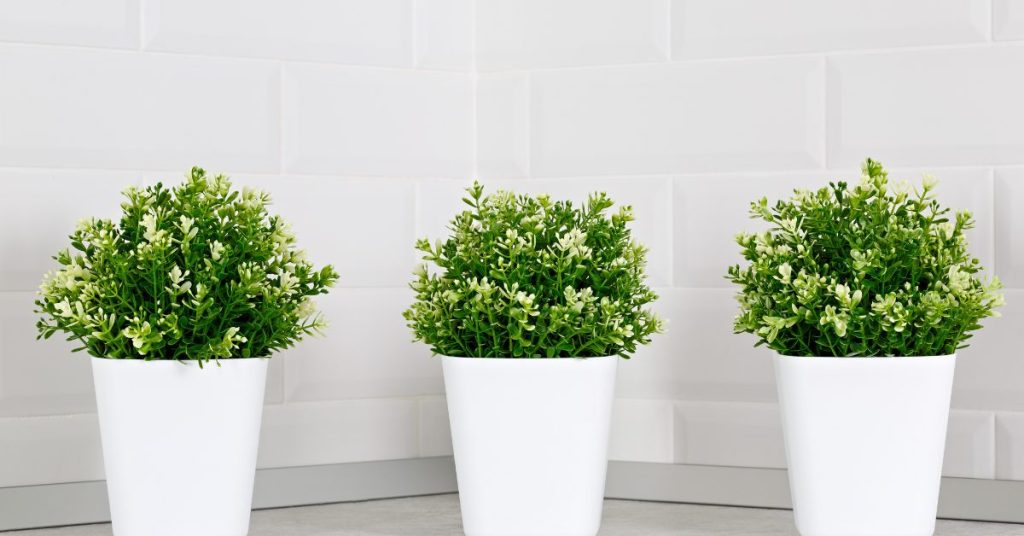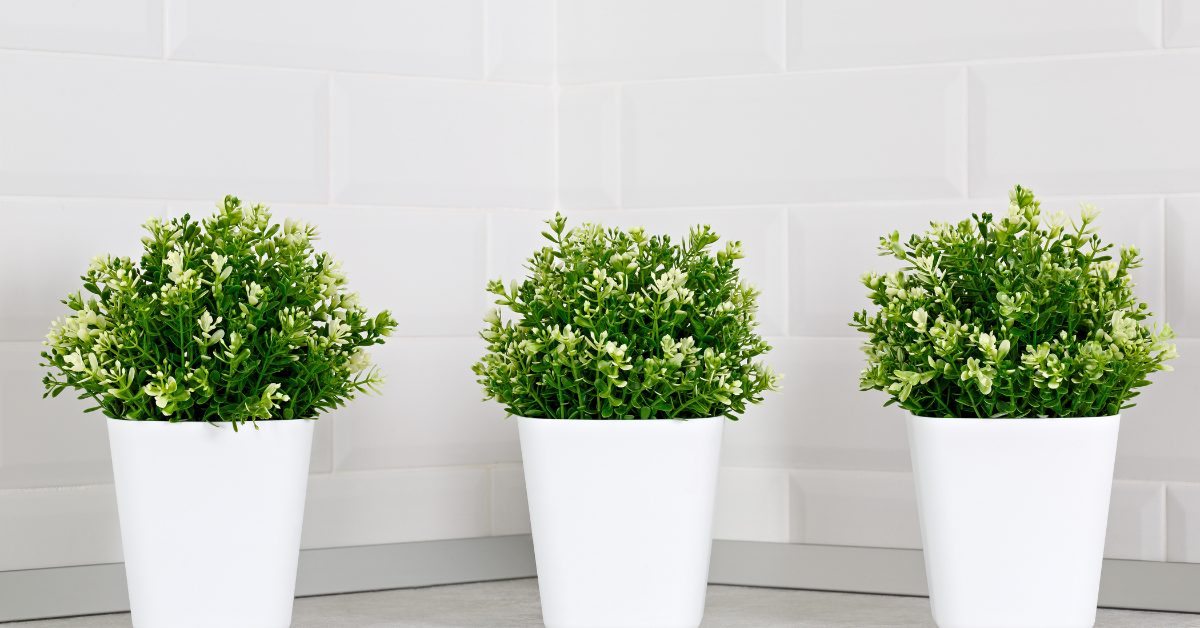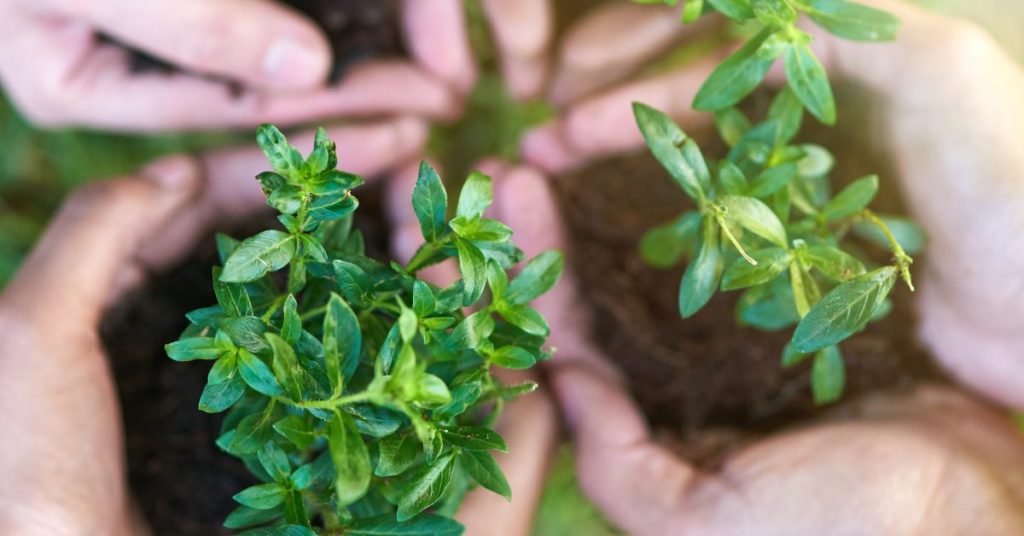It is true that artificial plants offer a convenient way to add a splash of green without the hassle of maintenance or watering.
But as they become more popular, we have an obligation to question their impact on the environment. There are many claims that they’re eco-friendly, even less harmful to the environment than actual plants!
While this sounds good on the surface, it’s important to consider the facts. Some manufacturers may be genuinely eco-conscious, but others might not be.
Clearing The Air – Factors to Consider
Let’s delve into the greenery frenzy and uncover the surprising truth behind this burgeoning trend.

The Popularity Paradox
As more people opt for artificial plants, their production ramps up, adding to their environmental impact.
The production process is resource-intensive. It guzzles up a ton of resources, like petroleum-based plastics, metals, and synthetic fibers. This hefty demand for resources is bad news for the environment. It leads to degradation and depletion of natural resources.
The process is also energy-intensive from start to finish, involving extracting raw materials, shipping them, and assembling the final product. All this energy use adds up, pumping out more carbon emissions and fueling climate change.
End of the Line – The Disposal Issue
Let’s be honest, trends come and go, and it’s unlikely that you’ll be passing down your fake plants to future generations. It will end up in the trash eventually.
As smart shoppers, it’s key to think about what products are made of before we buy it. Most faux plants are crafted from materials like petroleum-based plastics.
These plastics don’t break down naturally and can’t be recycled easily. So, when we toss them out the wrong way, we’re adding to greenhouse gases and hurting the environment. These plastic bits can stick around for ages, posing risks to wildlife and nature.
Your Choice, Your Responsibility
If you feel you really need in on the faux plant trend, a little awareness goes a long way.
Be a Smart Consumer
Choose plants manufactured through eco-conscious methods that minimize carbon emissions. Opt for artificial plants made from non-toxic, recyclable materials that adhere to environmental standards.
Ensure they’re crafted from safe, non-toxic plastics, such as Polyethylene Terephthalate (PET or PETE) and High-Density Polyethylene (HDPE), which are commonly recyclable.
Be wary of less frequently recycled plastics like Polyvinyl Chloride (PVC) and Polystyrene (PS). Manufacturers should clearly disclose the components of a product. If not, consider manufacturers that are transparent.
Consider Biodegradability
Biodegradable products are designed to decompose under specific conditions like heat, moisture, and microorganisms.
However, look for certifications from organizations like the Biodegradable Products Institute (BPI) or the American Society for Testing and Materials (ASTM) to ensure both recyclability and biodegradability.
Remember, while biodegradable plastics may break down faster, they can still harm the environment if not disposed of properly. Adhere to local recycling guidelines and dispose of plastic products correctly to minimize their environmental impact.
As the popularity of artificial plants grows, it’s crucial for us to be discerning consumers. Rather than blindly accepting claims of their environmental benefits, let’s critically assess their impact.
It’s also important to remember that artificial plants can’t offer the same emotional and physical health benefits as real ones. If it is low maintenance plants you are after, there are great options to choose from as well.
So, as we make choices, let’s prioritize sustainability and opt for solutions that contribute positively to our planet’s well-being.

Marzanne is our eco-enthusiast with an unwavering love for all things green! 🌱 As a self-proclaimed “green queen” and a DIY aficionado, her zeal for eco-conscious living shines through in every aspect of her life. ♻️
Join Marzanne as she shares her quirky, eco-infused adventures, offering tips, tricks, and a sprinkle of good-natured humor on integrating sustainable products, green design, and eco-friendly living into your home. She’s the green-spirited friend you never knew you were missing! 🌿🏡😄


